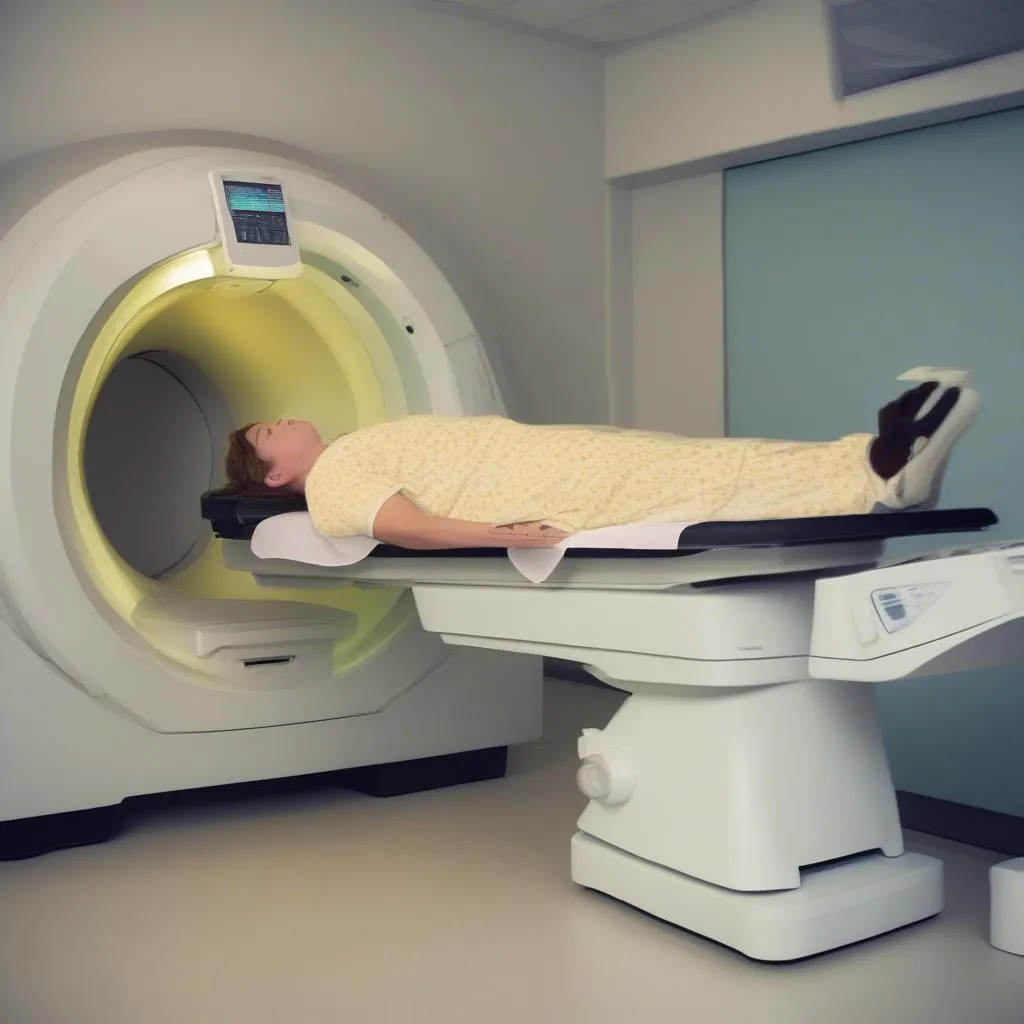Imagine you’re a mechanic trying to diagnose a problem with a car. You know the engine is making a strange noise, but you need to figure out what is causing it. A PET scan for the brain works similarly. It allows doctors to see how different areas of the brain are functioning, helping them pinpoint what’s causing a problem.
What is a PET scan for the brain?
Understanding the Brain
The brain is the control center of our bodies, responsible for everything from thinking and feeling to movement and breathing. It’s made up of billions of nerve cells that communicate with each other through electrical and chemical signals.
The Role of PET Scans
A PET (Positron Emission Tomography) scan is a type of imaging test that uses a radioactive tracer to create detailed images of the brain’s activity. This tracer, a special type of sugar, is injected into the bloodstream. The tracer travels to the brain and is absorbed by the most active areas.
Think of it like a mechanic using a heat-sensing camera to find a hot spot in the engine. The hot spot is where the problem is, and the PET scan is like a heat-sensing camera for the brain.
What is a PET Scan Used For?
PET scans are used for a variety of reasons, including:
- Diagnosing neurological disorders: PET scans can help doctors diagnose a variety of neurological disorders, such as Alzheimer’s disease, Parkinson’s disease, epilepsy, and brain tumors.
- Monitoring treatment: PET scans can help doctors monitor the effectiveness of treatment for neurological disorders.
- Planning brain surgery: PET scans can help doctors plan brain surgery by providing detailed images of the brain’s structure and function.
How Does a PET Scan Work?
Step-by-Step Process
- Injection: A small amount of radioactive tracer is injected into the bloodstream.
- Tracer Travels: The tracer travels to the brain and is absorbed by the most active areas.
- Imaging: A scanner detects the radioactive signals from the tracer and creates images of the brain.
- Analysis: Doctors analyze the images to identify any areas of abnormal activity.
Common Questions
Q: Is a PET scan safe?
A: PET scans are generally considered safe, but like any medical procedure, there are some potential risks. These risks are typically minimal, and your doctor will discuss them with you before the scan.
Q: What are the side effects of a PET scan?
A: Most people experience no side effects from a PET scan. Some people may experience a mild allergic reaction to the tracer, such as a rash or itching.
Q: How long does a PET scan take?
A: A PET scan typically takes about 30-60 minutes, depending on the specific test being performed.
Q: Does a PET scan hurt?
A: The injection of the tracer may cause a slight sting, but the scan itself is painless.
Types of PET Scans for the Brain
There are several types of PET scans used for the brain. These scans use different tracers and are used to assess different aspects of brain function. For example, one type of PET scan uses a tracer that binds to amyloid, a protein that accumulates in the brains of people with Alzheimer’s disease. This scan helps doctors diagnose Alzheimer’s and monitor the effectiveness of treatment.
PET Scans and Other Brain Imaging Tests
Comparing PET Scans to CT Scans
PET scans are not the only type of brain imaging test. CT scans are another common imaging test used to see the structure of the brain. However, CT scans do not show brain activity, which is where PET scans excel.
PET Scans vs. MRI Scans
MRI scans are another type of imaging test that provides detailed images of the brain’s structure. Unlike PET scans, MRI scans do not use radiation. Both PET scans and MRI scans are valuable diagnostic tools, and your doctor will determine the best type of scan for your specific needs.
 PET scan brain
PET scan brain
When Might You Need a PET Scan?
Symptoms and Reasons for PET Scans
There are many reasons why you might need a PET scan. Some common reasons include:
- Headache: A PET scan can help determine the cause of a persistent or severe headache.
- Seizures: PET scans can help identify the location in the brain where seizures originate.
- Cognitive decline: PET scans can help diagnose disorders that cause cognitive decline, such as Alzheimer’s disease.
- Memory problems: PET scans can help determine the cause of memory problems, such as dementia.
- Brain tumor: PET scans can help diagnose and monitor the growth of brain tumors.
Seeking Professional Advice
If you are experiencing any of these symptoms, it is important to see a doctor. They will determine if a PET scan is necessary for your diagnosis and treatment.
Conclusion
PET scans provide valuable information about brain function and can be used to diagnose a wide range of neurological disorders. If you are concerned about your brain health, talk to your doctor. They can help you determine if a PET scan is the right test for you.
Have any other questions about PET scans? Let us know in the comments below!
For expert support in automotive diagnostics and repair, contact us on Whatsapp at +84767531508. Our team of professionals is available 24/7 to help you with all your automotive needs.
 PET scan results
PET scan results
You can also learn more about other diagnostic tools and their uses in our articles: